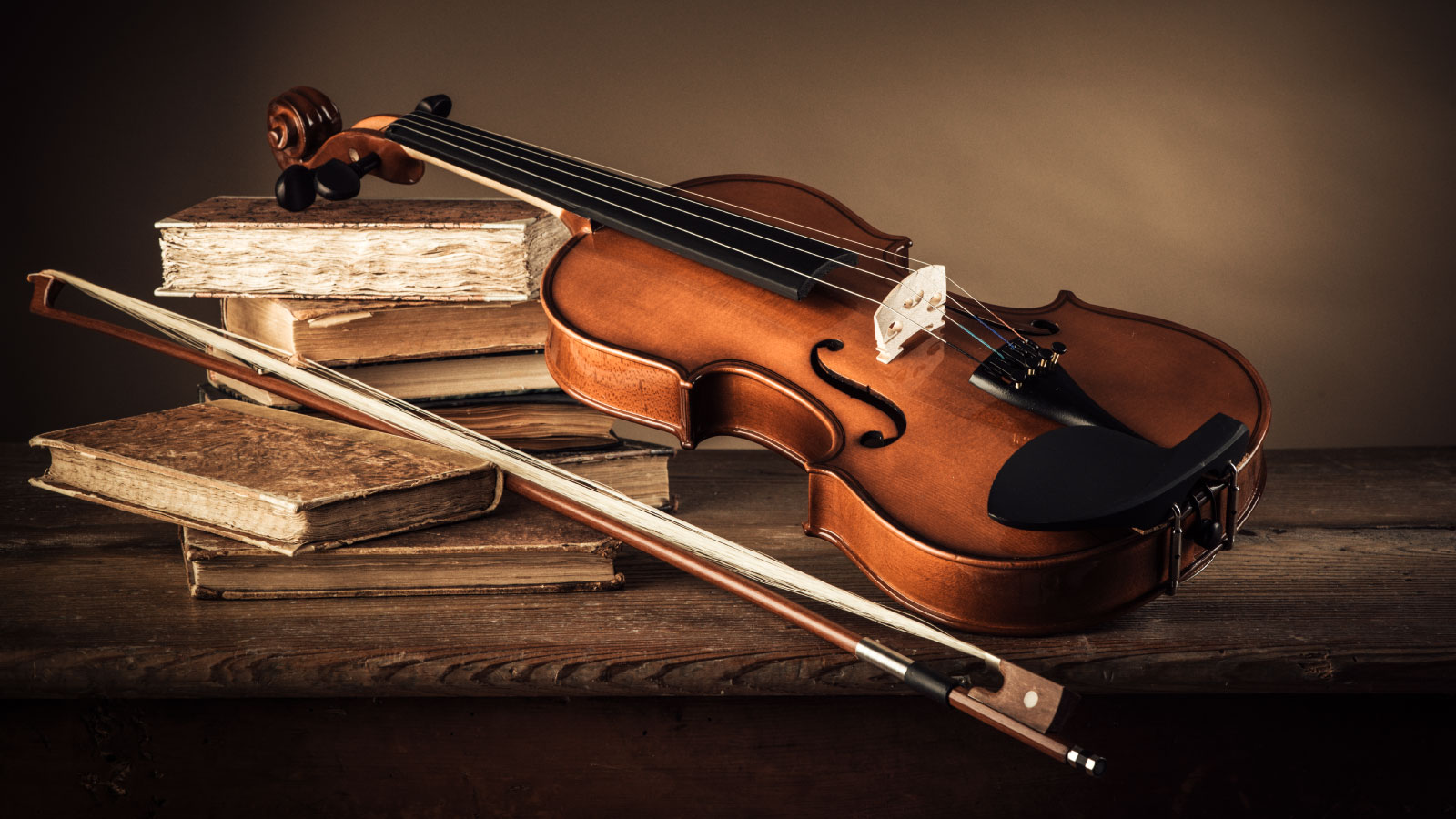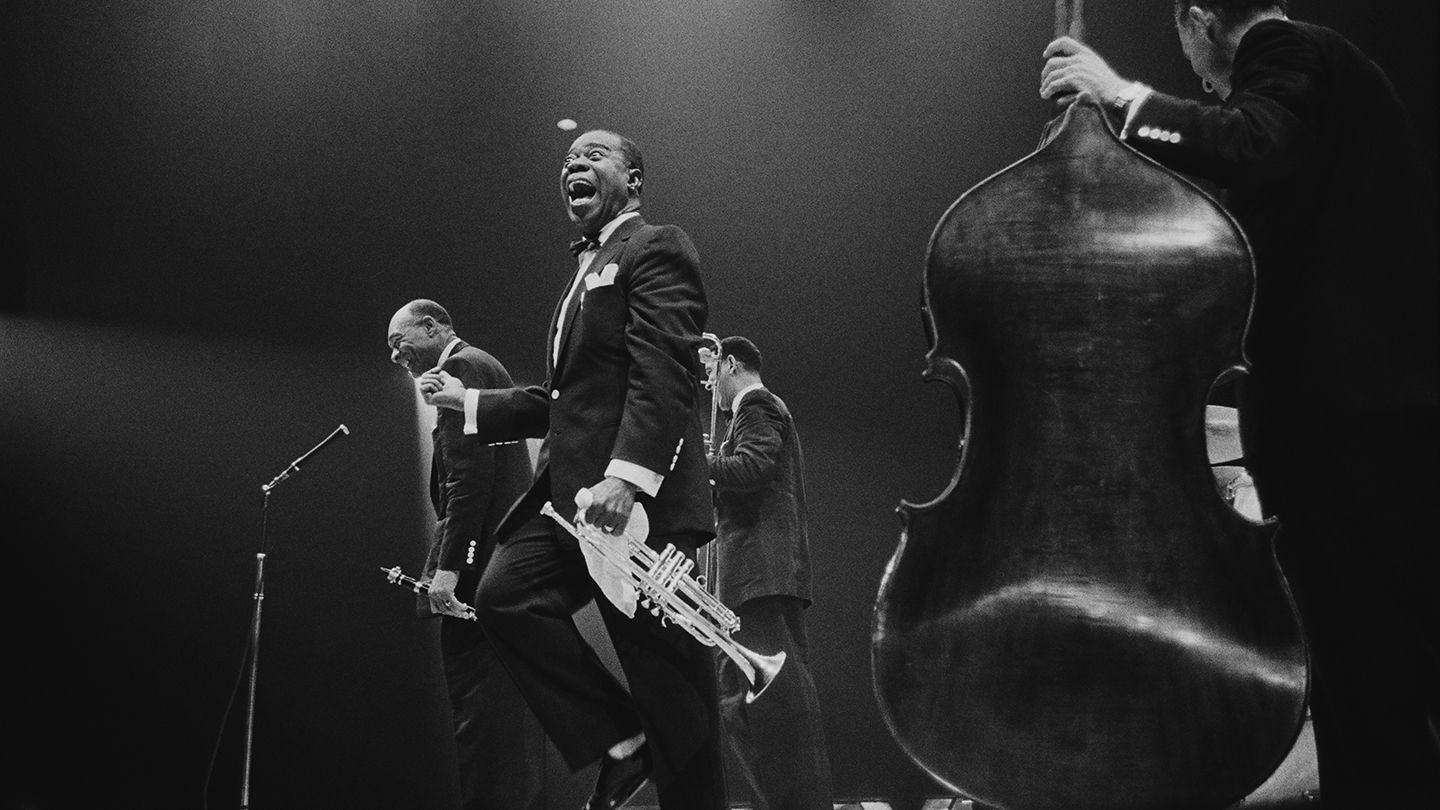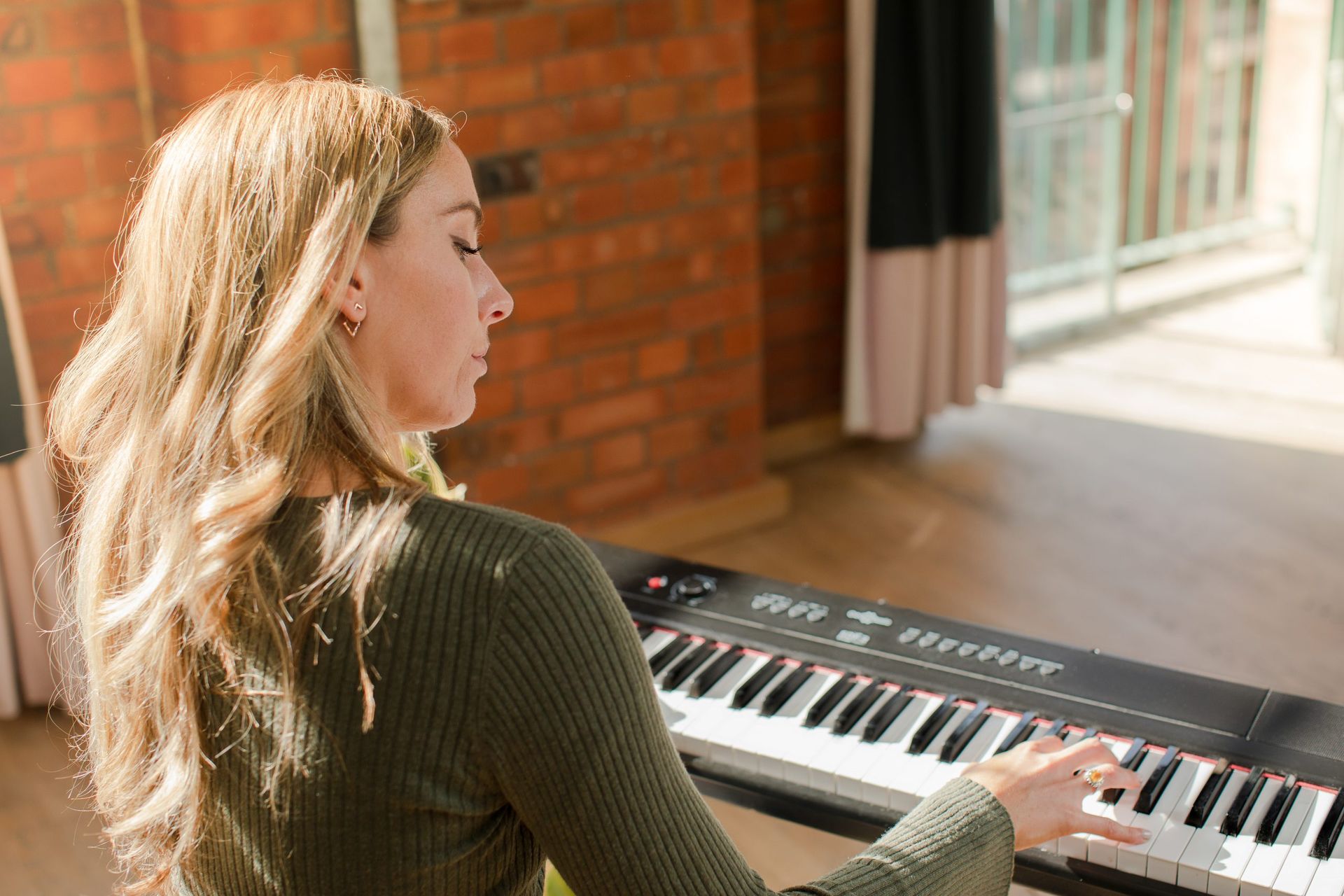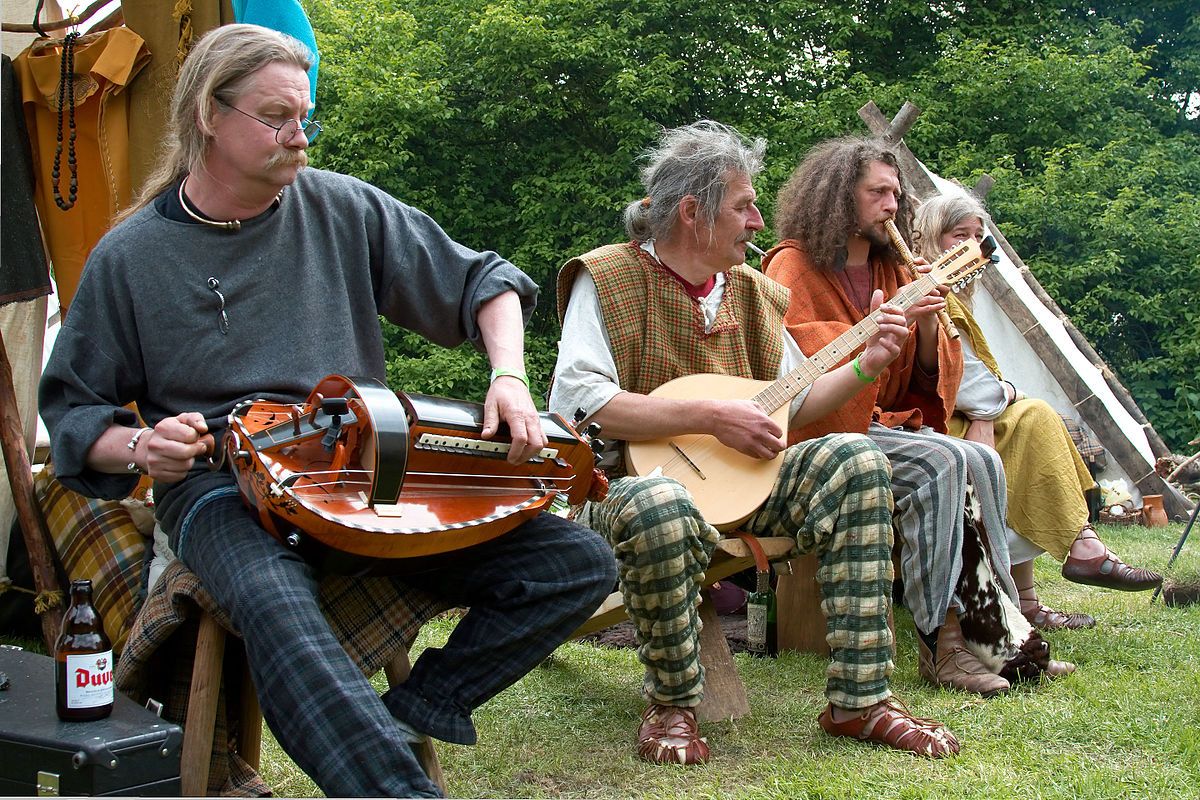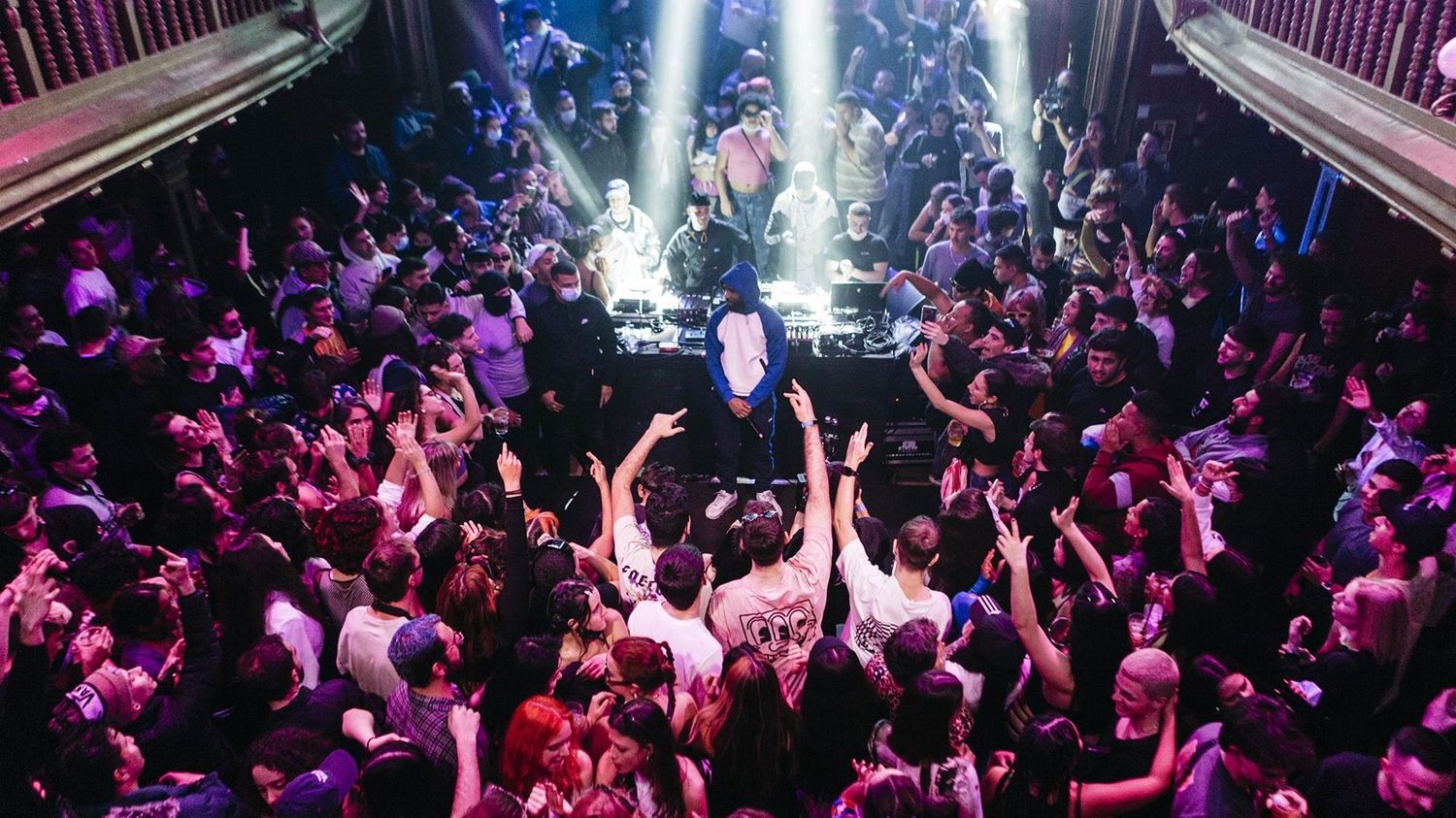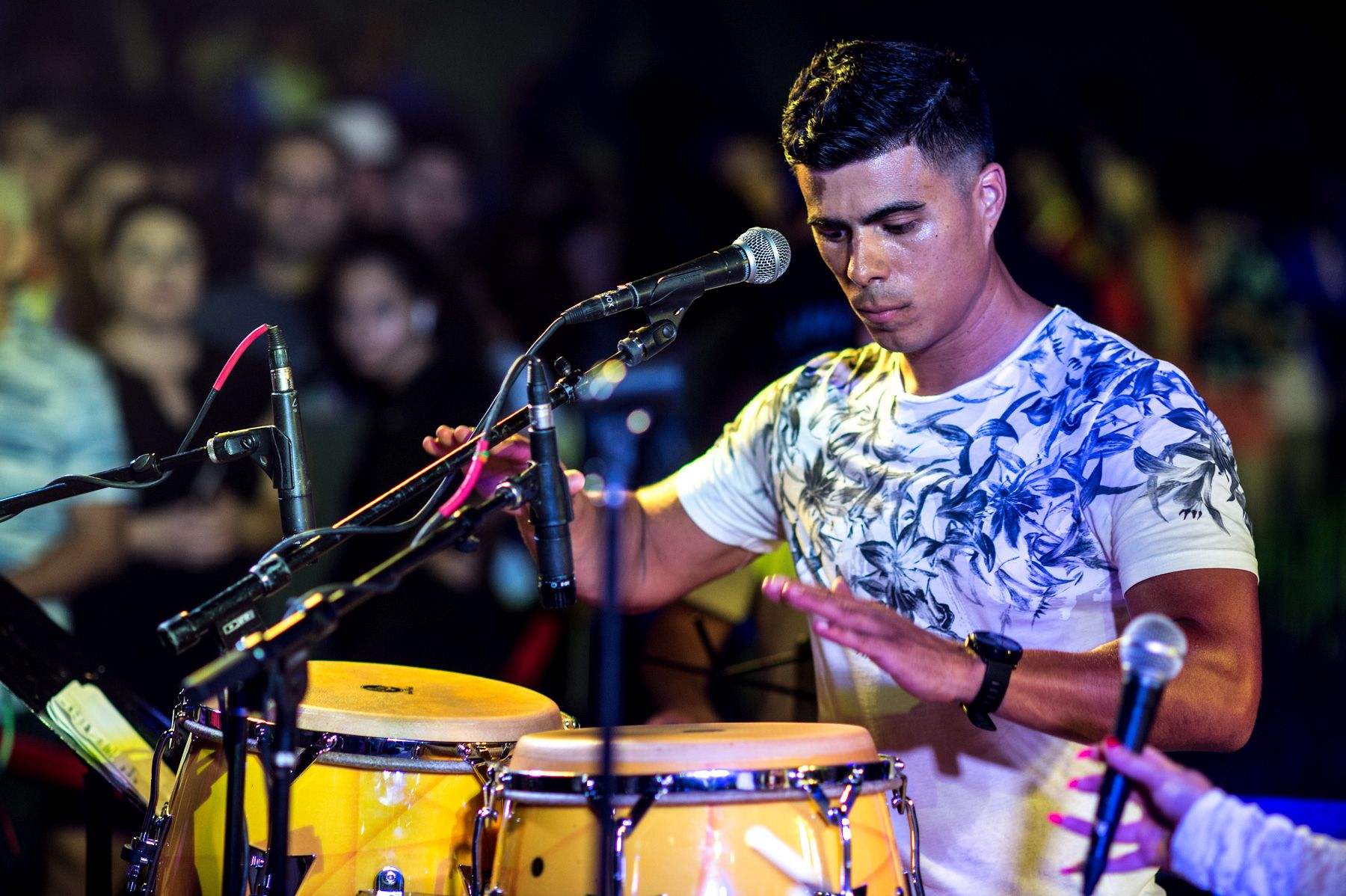Home>Production & Technology>Tempo>What Is The Tempo Of House Music


Tempo
What Is The Tempo Of House Music
Modified: March 9, 2024
Learn about the tempo of house music and how it influences the rhythm and energy of this popular genre. Discover the ideal tempo range for creating dynamic house tracks.
(Many of the links in this article redirect to a specific reviewed product. Your purchase of these products through affiliate links helps to generate commission for AudioLover.com, at no extra cost. Learn more)
Table of Contents
- Introduction
- What is House Music?
- The Origin of House Music
- The Evolution of House Music
- The Characteristics of House Music
- Exploring the Tempo of House Music
- Typical Tempo Range of House Music
- Impact of Tempo on House Music
- Popular House Music Subgenres and their Tempos
- Tempo Manipulation in House Music Production
- Conclusion
Introduction
House music is a genre that has captured the hearts of millions around the world. Its infectious beats and uplifting melodies have made it a staple in nightclubs, festivals, and even mainstream radio. But what exactly is house music, and why does it have such a powerful impact on listeners?
At its core, house music is a genre that originated in the late 1970s in Chicago, Illinois. It was heavily influenced by disco, funk, and electronic music, and was created as a reaction to the commercialization of disco music at the time. House music quickly gained popularity in underground clubs and spread to cities like New York, Detroit, and London.
The defining characteristic of house music is its steady 4/4 beat, which is created by a kick drum on every beat and a snare drum on beats two and four. This consistent rhythm provides a solid foundation for the vibrant and energetic melodies and vocals that are often featured in house music tracks.
Over the years, house music has evolved and branched out into various subgenres, each with its own distinct sound and style. These subgenres, such as deep house, tech house, and progressive house, have contributed to the genre’s versatility and longevity.
One crucial aspect of house music that often goes unnoticed but plays a significant role in shaping its overall sound is the tempo. The tempo, or speed, of a house track can greatly influence its energy, vibe, and danceability.
In this article, we will delve into the world of house music and explore the importance of tempo in shaping its unique sound. We will examine the typical tempo range of house music, the impact of tempo on the genre, and how producers manipulate tempo to create different moods and atmospheres within their tracks.
So, whether you’re a die-hard house music fan or simply someone curious about the genre, get ready to dive into the world of house music and uncover the secrets behind its captivating beats and infectious rhythms.
What is House Music?
House music is a genre of electronic dance music that originated in Chicago in the late 1970s. It is characterized by its infectious beats, soulful vocals, and energetic grooves. House music is known for its ability to create a sense of unity and connection among listeners on the dancefloor.
At its core, house music is about the communal experience of dance and music. It aims to bring people together and provide a space for self-expression and liberation. The genre’s name, “house,” comes from the famous Chicago nightclub, The Warehouse, where the genre was first popularized by DJs like Frankie Knuckles and Larry Levan.
House music draws inspiration from various musical genres, including disco, funk, soul, and electronic music. It features repetitive beats, synth-driven melodies, and often incorporates samples from classic songs to create a sense of nostalgia and familiarity.
One of the defining characteristics of house music is its 4/4 time signature, with a steady kick drum on each beat and a snare drum on beats two and four. This consistent rhythm provides a solid foundation for the genre’s infectious grooves and allows for seamless mixing and blending of tracks by DJs.
House music has a wide range of subgenres, each with its own unique style. Deep house, characterized by its soulful and melodic elements, emphasizes the emotional and atmospheric aspects of the genre. Tech house incorporates elements of techno and focuses on driving beats and intricate production techniques. Progressive house is known for its evolving and complex arrangements, building tension and releasing it in an epic climax.
House music has evolved and spread across the globe, becoming a dominant force in the electronic music scene. It has influenced and shaped other genres such as trance, electro house, and EDM. Today, house music is played in clubs, festivals, and radio stations worldwide, continuing to captivate audiences and inspire new generations of artists and music lovers.
The Origin of House Music
The roots of house music can be traced back to the vibrant nightlife scene of Chicago in the late 1970s. It emerged as a response to the commercialization of disco music and aimed to create an inclusive and energetic atmosphere for club-goers.
The birth of house music can be attributed to legendary DJs such as Frankie Knuckles, Larry Heard (also known as Mr. Fingers), and Ron Hardy, who played a pivotal role in popularizing the genre. These DJs, along with producers like Marshall Jefferson and Jesse Saunders, experimented with blending elements of disco, funk, and electronic music to create a new sound that would become the foundation of house music.
One of the key venues that played a significant role in the development of house music was The Warehouse, a nightclub in Chicago. Frankie Knuckles, the resident DJ at The Warehouse, was known for his eclectic and soulful sets that combined disco tracks with electronic beats. The music played at The Warehouse became synonymous with the term “house music” – a nod to the club’s name.
The popularity of house music spread beyond the confines of The Warehouse and other Chicago clubs. It found its way into clubs in New York, Detroit, and eventually, across the Atlantic to London. House music became a symbol of the underground club scene, offering an alternative to mainstream pop music.
As house music gained momentum, record labels began to take notice. Labels like Trax Records and DJ International played a pivotal role in releasing early house music tracks, further fueling the genre’s growth and popularity. The music produced during this era had a raw and gritty quality, often created using drum machines, synthesizers, and samplers.
House music also played a significant role in breaking down racial, gender, and sexuality barriers. The inclusive nature of the genre allowed people from all walks of life to come together and express themselves freely. It provided an avenue for marginalized communities to find acceptance and representation within the music scene.
Today, the legacy of the originators of house music lives on, and their influence can be heard in the music produced by contemporary artists. The genre continues to evolve, incorporating new elements and fusing with other genres, while still remaining true to its roots. House music remains a powerful force in the music industry, bringing people together and spreading joy on dancefloors around the world.
The Evolution of House Music
House music has undergone a remarkable evolution since its inception in the late 1970s. As the genre spread across different cities and cultures, it embraced new influences and experimented with innovative sounds and production techniques.
In the 1980s, house music started to gain traction beyond the underground club scene. Artists like Steve “Silk” Hurley, Farley “Jackmaster” Funk, and Inner City achieved mainstream success with their chart-topping house tracks. This crossover into the mainstream propelled house music into a global phenomenon.
During the 1990s, house music continued to evolve with the emergence of various subgenres. The rise of techno and rave culture influenced the development of genres like acid house and Detroit house. Acid house incorporated squelchy, acidic synth sounds, while Detroit house drew inspiration from the rhythmic and futuristic soundscapes of Detroit techno.
As the new millennium approached, house music experienced a resurgence in popularity with the advent of French house. Artists like Daft Punk and Stardust introduced a funky and disco-inspired sound that revitalized the genre and brought it back to the forefront of electronic music.
In the 2000s, house music continued to diversify with the emergence of subgenres like deep house, tech house, and electro house. Deep house incorporated soulful and atmospheric elements, while tech house fused techno and house together, creating a distinct and driving sound. Electro house brought a high-energy and aggressive approach to the genre, with heavy synths and big drops.
The rise of digital music production and the accessibility of music software in the 2010s allowed for even more experimentation and blending of genres within house music. Producers incorporated elements of pop, R&B, and hip-hop, creating a fusion of styles that appealed to a wider audience.
Today, the evolution of house music continues with the rise of subgenres like future house, bass house, and tropical house. These subgenres incorporate elements of electronic dance music, trap, and even reggaeton, pushing the boundaries of house music and keeping it fresh and exciting for listeners.
Throughout its evolution, house music has maintained its core elements of infectious beats, soulful vocals, and a sense of community and inclusivity. It has proven to be a resilient genre that adapts to the times while staying true to its roots. As new artists emerge and push the boundaries of the genre, the future of house music looks bright and promising.
The Characteristics of House Music
House music is characterized by a set of distinctive traits that set it apart from other electronic dance music genres. These characteristics contribute to its infectious and uplifting energy, making it a favorite among club-goers and music enthusiasts alike.
One of the defining characteristics of house music is its steady 4/4 beat. The rhythmic structure of house music consists of a kick drum on each beat and a snare drum on beats two and four. This consistent and driving beat provides a solid foundation for the genre’s infectious grooves and allows for seamless mixing and blending of tracks by DJs.
House music often features soulful and uplifting vocals. These vocals can range from melodic and smooth to powerful and emotionally charged. The lyrics in house music tracks often convey messages of love, unity, and empowerment, creating a sense of connection and positivity among listeners.
Another hallmark characteristic of house music is its use of repetitive melodies and hooks. The melodies in house music are often catchy and memorable, creating a sense of familiarity and allowing listeners to easily connect with the music. These repetitive elements contribute to the genre’s hypnotic and immersive nature.
House music often incorporates samples from classic songs, giving it a nostalgic and familiar quality. These samples can range from soul, disco, funk, or even jazz recordings and add a layer of depth and richness to the tracks. The art of sampling is an integral part of house music production, allowing producers to pay homage to their musical influences while creating something new and unique.
The genre also embraces a sense of community and inclusivity. House music has always been associated with creating spaces where people from different backgrounds can come together and express themselves freely. It has played a significant role in breaking down racial, gender, and sexuality barriers, providing a safe haven where everyone can feel accepted and celebrated.
House music also thrives on its emotive and uplifting energy. The genre has a knack for evoking feelings of joy, happiness, and freedom. It is often played in clubs and festivals to create a euphoric atmosphere, where people can let loose and dance their hearts out.
Overall, the characteristics of house music encompass its rhythmic structure, soulful vocals, repetitive melodies, nostalgic samples, sense of community, and uplifting energy. These traits come together to create a genre that is timeless, dynamic, and capable of making a profound impact on its listeners.
Exploring the Tempo of House Music
The tempo, or speed, of a house music track plays a vital role in shaping its overall vibe, energy, and danceability. The tempo is measured in beats per minute (BPM) and can range from slow and relaxed to fast and energetic.
House music is primarily known for its moderate to fast tempo, typically ranging between 120 and 130 BPM. This tempo range provides a good balance between groove, energy, and the ability to keep the dancefloor moving. However, it’s important to note that house music tempos can vary depending on the subgenre and the artistic vision of the producer.
The tempo of a house music track directly impacts how it feels and how people respond to it. A slower tempo tends to create a more laid-back and chilled atmosphere, allowing room for deep basslines, atmospheric textures, and intricate percussion patterns. It can be perfect for lounges or early sets, setting the mood and gradually building anticipation.
On the other hand, a faster tempo in the range of 125 to 130 BPM is more commonly associated with peak-time dancefloor energy. This tempo range drives the energy levels up, creating a sense of urgency and excitement. It encourages movement, unleashing the euphoric and uplifting sensations that house music is renowned for.
The choice of tempo also depends on the subgenre of house music. For example, deep house tends to have a slower tempo, usually ranging from 110 to 120 BPM, emphasizing the atmospheric and hypnotic elements of the genre. Tech house, with its more driving and rhythmic elements, typically falls within the 125 to 130 BPM range.
Producers often experiment with different tempos to create unique experiences within the genre. Some may push the boundaries by increasing the tempo to create a more frenetic and energetic feel, while others may slow it down to create a more introspective and groovy vibe.
Regardless of the tempo, the key is to find the sweet spot that connects with the audience and maintains a compelling groove. The tempo should complement other elements of the track, such as the bassline, melodic elements, and vocals, to create a cohesive and immersive experience.
Ultimately, the tempo of house music is a fundamental element that contributes to its ability to move and unite people on the dancefloor. Whether it’s a slower, atmospheric track or a fast-paced club anthem, the tempo sets the pace and creates the foundation for an unforgettable house music journey.
Typical Tempo Range of House Music
The tempo range of house music is a key element in defining its groove, energy, and danceability. While there is flexibility and variation within the genre, there are typical tempo ranges that are commonly associated with different styles of house music.
In general, house music falls within the range of 120 to 130 beats per minute (BPM). This range provides a moderate to fast tempo that is suitable for creating a lively and energetic atmosphere on the dancefloor. It allows for seamless mixing and blending of tracks and provides a solid foundation for the genre’s infectious grooves.
Within the 120 to 130 BPM range, there are specific subgenres and styles of house music that may have distinct tempo preferences. Here are some examples:
- Deep House: Deep house tends to have a more relaxed and laid-back feel compared to other subgenres. It typically falls within the range of 110 to 120 BPM. This slower tempo allows for the incorporation of atmospheric textures, soulful vocals, and deep basslines, creating a chilled and introspective vibe.
- Tech House: Tech house is known for its driving rhythm and pulsating beats. It commonly falls within the range of 125 to 130 BPM. This faster tempo maintains the energy levels and creates a sense of urgency on the dancefloor, making it ideal for peak-time sets.
- Progressive House: Progressive house often has a slower tempo compared to other subgenres of house music. It can range from around 120 to 128 BPM. This tempo range allows for gradual builds, epic breakdowns, and atmospheric melodies, creating a sense of progression and anticipation.
It is worth noting that these tempo ranges serve as guidelines and can be subject to variation depending on the artist’s creativity and vision. Some producers may experiment with different tempos to bring a unique twist to their tracks without adhering strictly to these ranges.
Furthermore, different tracks within the same subgenre can also have slight tempo variations to add variety and dynamics to a DJ’s set. This variation in tempo helps create different moods and intensities throughout a performance and keeps the audience engaged.
Ultimately, the typical tempo range of house music provides a framework for DJs, producers, and listeners to understand and identify the genre’s distinct groove. It ensures that there is a consistent energy and danceability that is associated with house music, allowing for seamless integration and enjoyment on the dancefloor.
Impact of Tempo on House Music
The tempo, or speed, of a house music track has a significant impact on its overall feel, energy, and danceability. The tempo sets the pace and rhythm, shaping the experience for both the listener and the dancer. It plays a crucial role in creating different moods and atmospheres within the genre.
A faster tempo, typically ranging from 125 to 130 BPM, is commonly associated with peak-time house tracks. This higher tempo creates a sense of urgency and excitement on the dancefloor. The faster beats per minute drive the energy levels up, encouraging movement and unleashing the euphoric sensations that house music is known for. It fuels intense moments of connection and elation, creating an electrifying atmosphere.
On the other hand, a slower tempo, often found in deep house tracks around 110 to 120 BPM, creates a more laid-back and relaxed vibe. The slower beats per minute allow for deeper basslines, atmospheric textures, and intricate percussion patterns to shine. This tempo range is ideal for setting a more introspective and groovy atmosphere, creating a space for deep musical exploration and connection.
The impact of tempo also extends to the production and mixing aspects of house music. A faster tempo provides less sonic space between beats, requiring producers to create tighter, more concise arrangements. This can lead to a more intense and relentless feel to the music. Conversely, a slower tempo allows for longer and more intricate musical phrases, allowing for more exploration and development of musical ideas.
Moreover, the tempo of a house track can influence the mixing and blending techniques used by DJs. Transitioning smoothly between tracks requires an understanding of how the tempos align or contrast with each other. DJs often use tempo manipulation techniques, such as beatmatching and tempo transitions, to ensure a seamless flow in their sets. This skillful manipulation of tempo can create exciting builds, breakdowns, and transitions, heightening the overall impact and enjoyment on the dancefloor.
Ultimately, the tempo of house music leaves a lasting imprint on the overall experience. Whether it’s the exhilarating rush of a high-tempo track or the hypnotic groove of a slower one, the tempo sets the tone and invites listeners into a captivating world of rhythm and melody. It adapts and responds to the energy of the dancefloor, shaping the connection between the music and the audience in a powerful and visceral way.
Popular House Music Subgenres and their Tempos
House music has given rise to various subgenres, each with its own distinct characteristics and tempos. These subgenres have contributed to the diversity and evolution within the house music genre, appealing to different audiences and catering to various moods and musical preferences. Here are some popular house music subgenres and their typical tempos:
- Deep House: Deep house is characterized by its soulful and atmospheric sound. It typically has a slower tempo, ranging from 110 to 120 BPM. This tempo range allows for a relaxed and groovy feel, emphasizing the deep basslines, lush chords, and smooth vocals that are hallmarks of the subgenre.
- Tech House: Tech house combines elements of house and techno, creating a dynamic and rhythmically-driven sound. It usually falls within the range of 125 to 130 BPM, typifying the fast-paced energy associated with peak-time house music. The driving beats and intricate production techniques make it ideal for getting the dancefloor moving.
- Progressive House: Progressive house incorporates melodic and atmospheric elements, often building tension and creating a sense of progression throughout the track. Its tempo can range from around 120 to 128 BPM. The gradual builds, epic breakdowns, and uplifting melodies make it a favorite among those seeking a more euphoric and emotional experience.
- Bass House: Bass house combines the infectious beats of house music with the heavy basslines of genres like dubstep and UK garage. It typically falls within the range of 125 to 130 BPM, delivering a high-energy and bass-driven sound that hits hard on the dancefloor. This tempo range allows for a perfect balance between the rhythmic intensity and the weighty bass elements.
- Disco House: Disco house pays homage to the disco era, fusing classic disco elements with modern house production. It often falls within the range of 120 to 128 BPM, capturing the infectious and feel-good vibe of disco while injecting a contemporary dancefloor energy. The tempo strikes a balance between keeping the dancefloor moving and allowing space for the disco-infused melodies and grooves to shine.
It’s important to note that while these tempo ranges are typical of each subgenre, there is room for variation and experimentation. Artists within these subgenres may choose to slightly deviate from the established ranges to create unique sonic experiences or push the boundaries of the genre.
These popular house music subgenres showcase the versatility and adaptability of the genre. They cater to different musical preferences and create diverse atmospheres on the dancefloor. Whether it’s the laid-back groove of deep house, the driving rhythms of tech house, or the melodic journey of progressive house, the variety of subgenres within house music ensures that there is something for everyone.
Tempo Manipulation in House Music Production
Tempo manipulation is a powerful tool used by producers in house music to shape the mood, energy, and overall feel of a track. It allows for creativity and experimentation, giving producers the ability to craft unique musical experiences that defy traditional tempo boundaries.
One common technique used in tempo manipulation is the gradual tempo change within a track. This technique involves gradually increasing or decreasing the tempo over a period of time to create a sense of tension, anticipation, or release. A gradual tempo increase can elevate the energy levels of a track, building excitement and preparing the listener for an exhilarating drop or peak moment. Conversely, a gradual tempo decrease can introduce a moment of tranquility or reflection, providing a breather before the track picks up again.
Producers also use abrupt tempo changes as a way to surprise and captivate the listener. These sudden shifts in tempo can instantly change the mood or direction of a track, adding an unexpected twist or injecting a burst of energy. These changes can be used sparingly to make specific sections of a track stand out or be used more extensively to create a dynamic and ever-evolving musical journey.
Another technique in tempo manipulation is the use of time-stretching or time-compressing audio samples. This technique allows producers to adjust the tempo of a specific sample while maintaining its pitch and quality. By manipulating the tempo of samples, producers can seamlessly integrate different musical elements into their track, even if they were originally recorded at different tempos. This technique opens up a world of creative possibilities, enabling producers to experiment with diverse sound sources and textures.
When it comes to remixing tracks, producers often employ tempo manipulation to give the original song a fresh perspective. By changing the tempo of an original track, producers can transform its vibe and style, breathing new life into familiar elements. This allows for the creation of diverse remixes that cater to different genres, moods, or dancefloor settings.
It’s important to note that while tempo manipulation offers a wide range of creative options, it requires skill and precision to execute effectively. Producers must ensure that the changes in tempo are seamless and feel natural, avoiding any jarring or disjointed transitions that may disrupt the flow of the music.
Tempo manipulation in house music production is a powerful tool that allows producers to push the boundaries of creativity and expression. It gives them the flexibility to craft unique and captivating musical experiences, captivating listeners and elevating the genre to new heights.
Conclusion
House music is a genre that has captured the hearts of music lovers worldwide. Its infectious beats, soulful vocals, and energetic grooves have made it a staple in clubs, festivals, and beyond. The tempo of house music plays a crucial role in shaping its overall vibe, energy, and danceability.
House music typically falls within the range of 120 to 130 beats per minute (BPM), providing a moderate to fast tempo that keeps the dancefloor moving. However, there are variations within subgenres, such as deep house, tech house, and progressive house, that have their own distinctive tempos.
The tempo of a house music track directly impacts its feel and response. A faster tempo creates a high-energy and exhilarating atmosphere, while a slower tempo brings a relaxed and groove-focused vibe. Producers and DJs manipulate tempo to create different moods, build tension, and redefine the musical experience.
House music subgenres offer further exploration of tempos, with deep house having a slower pace around 110 to 120 BPM, tech house driving the energy with 125 to 130 BPM, progressive house gradually building at 120 to 128 BPM, and bass house hitting hard with the same energetic tempo. These subgenres cater to diverse musical preferences and provide a range of experiences.
Tempo manipulation within house music production allows for creativity and experimentation. Producers can use techniques like gradual tempo changes, abrupt shifts, time-stretching, and time-compressing to shape tracks and surprise listeners. Remixing tracks with tempo adjustments offers fresh perspectives and injects new life into familiar sounds.
Overall, the tempo of house music is a fundamental aspect that contributes to its infectious and uplifting nature. It creates the foundation for the genre’s energy, groove, and danceability. Whether it’s the driving beats of tech house, the atmospheric melodies of progressive house, or the soulful grooves of deep house, the tempo of house music guides the rhythm and essence of this beloved genre.

